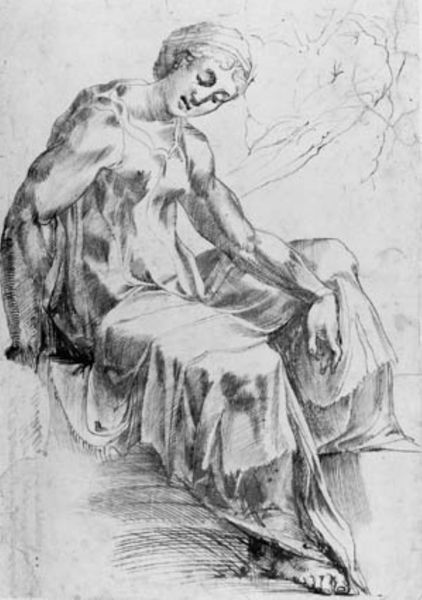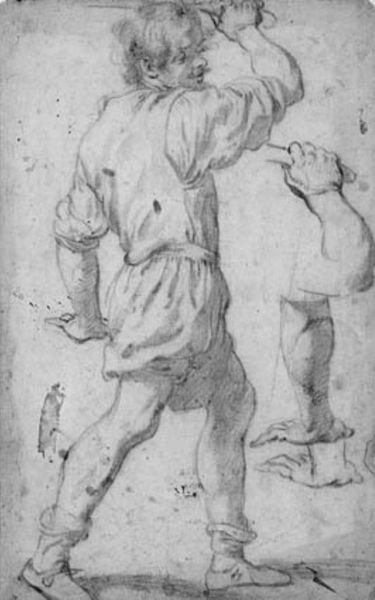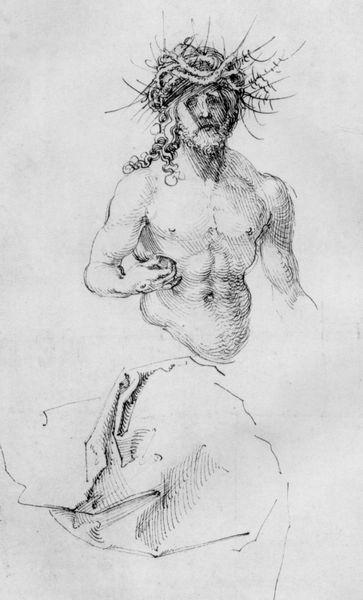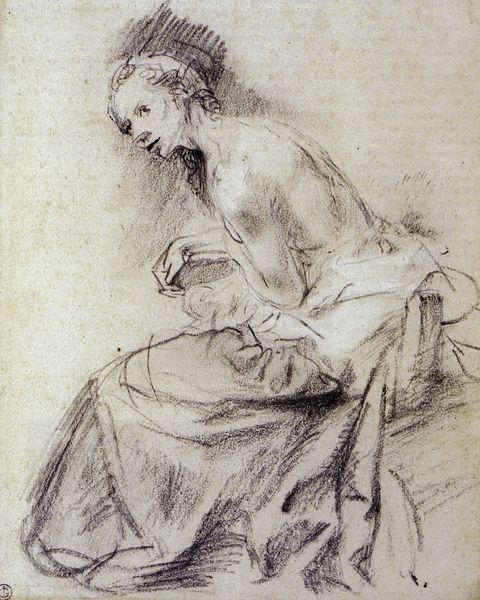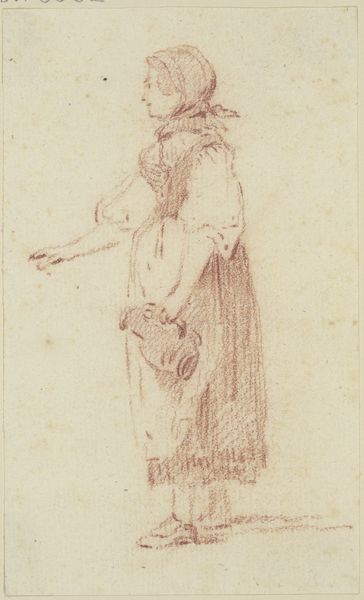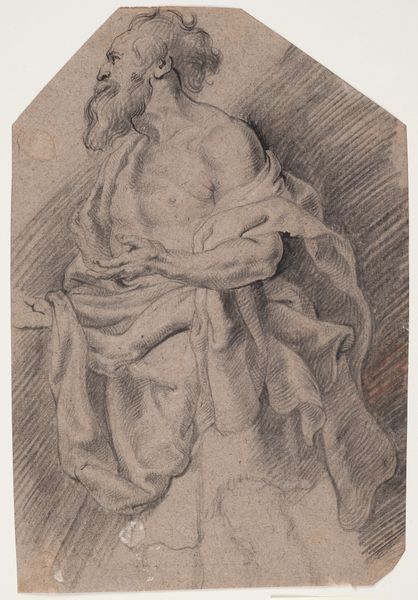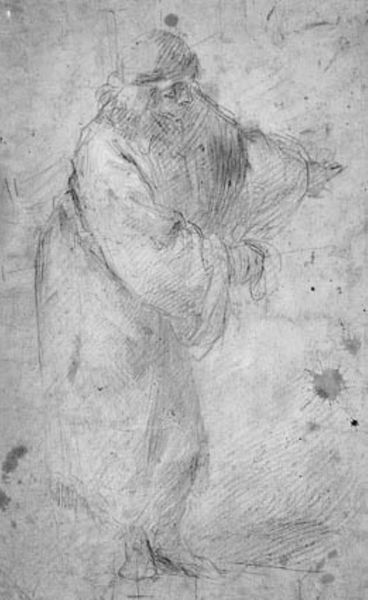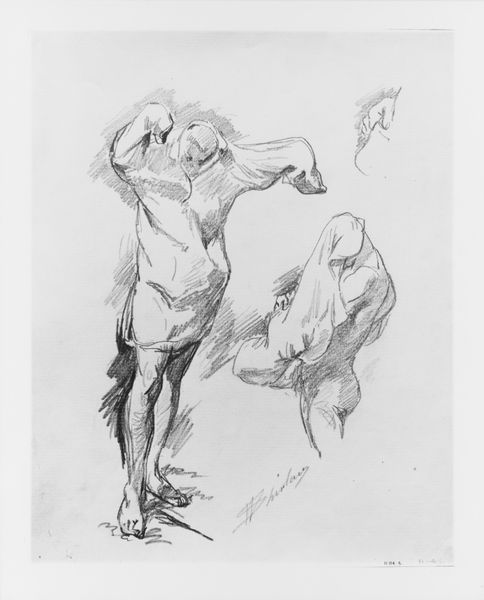
An apostle from Federico Barocci: The Last Supper, Urbino Cathedral 1528 - 1612
0:00
0:00
drawing, charcoal
#
portrait
#
drawing
#
pencil sketch
#
charcoal drawing
#
mannerism
#
charcoal art
#
portrait drawing
#
charcoal
#
charcoal
Dimensions: 230 mm (height) x 149 mm (width) (bladmaal)
Editor: So, this is a study of an apostle, sketched by Federico Barocci sometime between 1528 and 1612. It’s charcoal, held by the SMK, and was preparatory work for a painting in the Urbino Cathedral. I'm immediately struck by the figure's almost melancholic profile; you can almost feel the weight of the world on his shoulders, beautifully captured with those loose charcoal strokes. What can you tell me about this piece in terms of its historical significance? Curator: Well, given that this drawing was created for a larger piece in the Urbino Cathedral, we need to understand the socio-political role of religious imagery during the late Renaissance and early Baroque periods. Mannerism, as a style, often expressed anxieties about religious upheaval and questioned established norms, using exaggerated forms and heightened emotion. Is that visible to you? Editor: I do see that. There's something very emotive and vulnerable about his posture, very different to say, a heroic Michelangelo figure. It's like he's caught in a moment of doubt or reflection. Curator: Exactly. Now, consider the institution of the church at this time, grappling with the Reformation. Barocci's work was often commissioned by the Catholic Church as a powerful form of visual rhetoric, intended to reaffirm faith amidst the controversy of that moment in time. Think about how that impacts what the church wanted people to see versus what Barocci maybe felt as a human being looking at a turbulent religious time. What tension do you see that generates? Editor: So, you’re saying the church wanted unwavering faith portrayed, yet Barocci's preparatory study hints at human complexity and maybe even questioning of the faith, visualized in the face of the apostle. I suppose that makes the final painting in the Cathedral a very active form of cultural diplomacy. Curator: Precisely. These works, in their own way, defined how powerful entities at that time expressed not just power, but identity, during major periods of change. So, we're looking at so much more than just technique when we are in the gallery. Editor: This really reshapes how I look at these classical works now. It's not just about form; it is an expression of complex dialogues and historical conflicts. Curator: Absolutely. It’s those often silent battles that are so important to unpack to gain a deep appreciation.
Comments
No comments
Be the first to comment and join the conversation on the ultimate creative platform.
